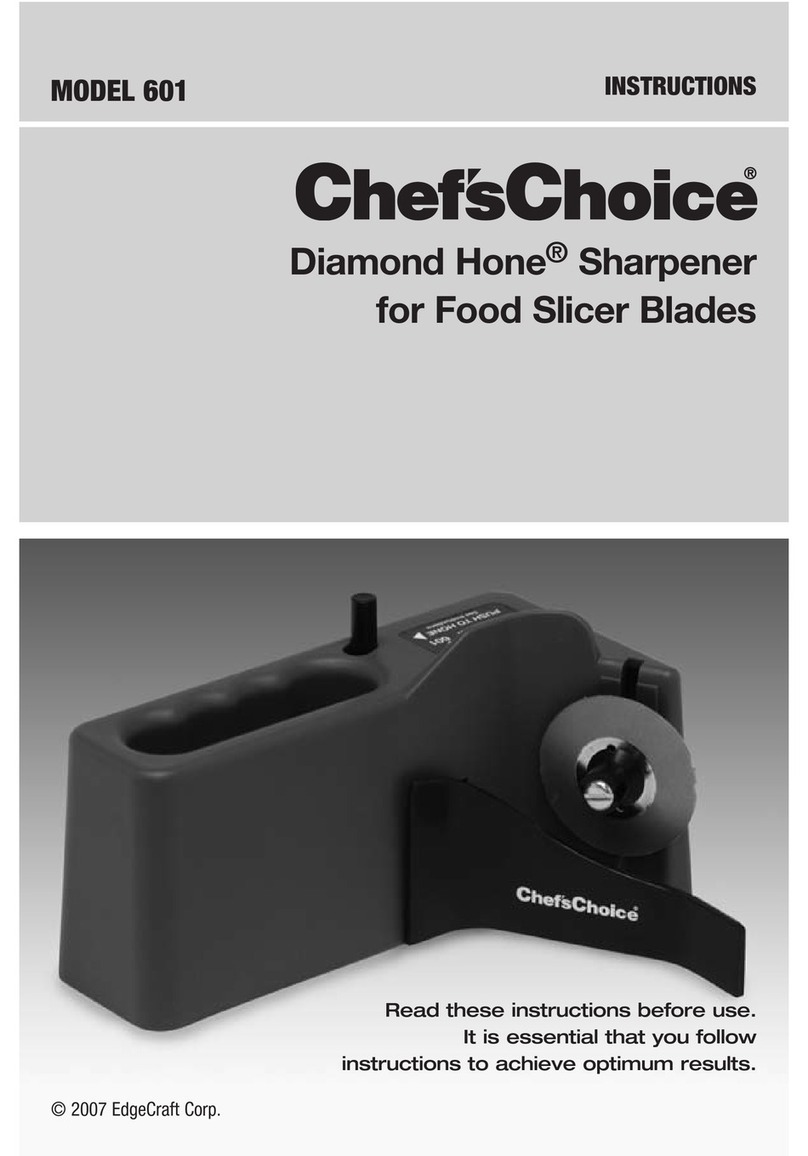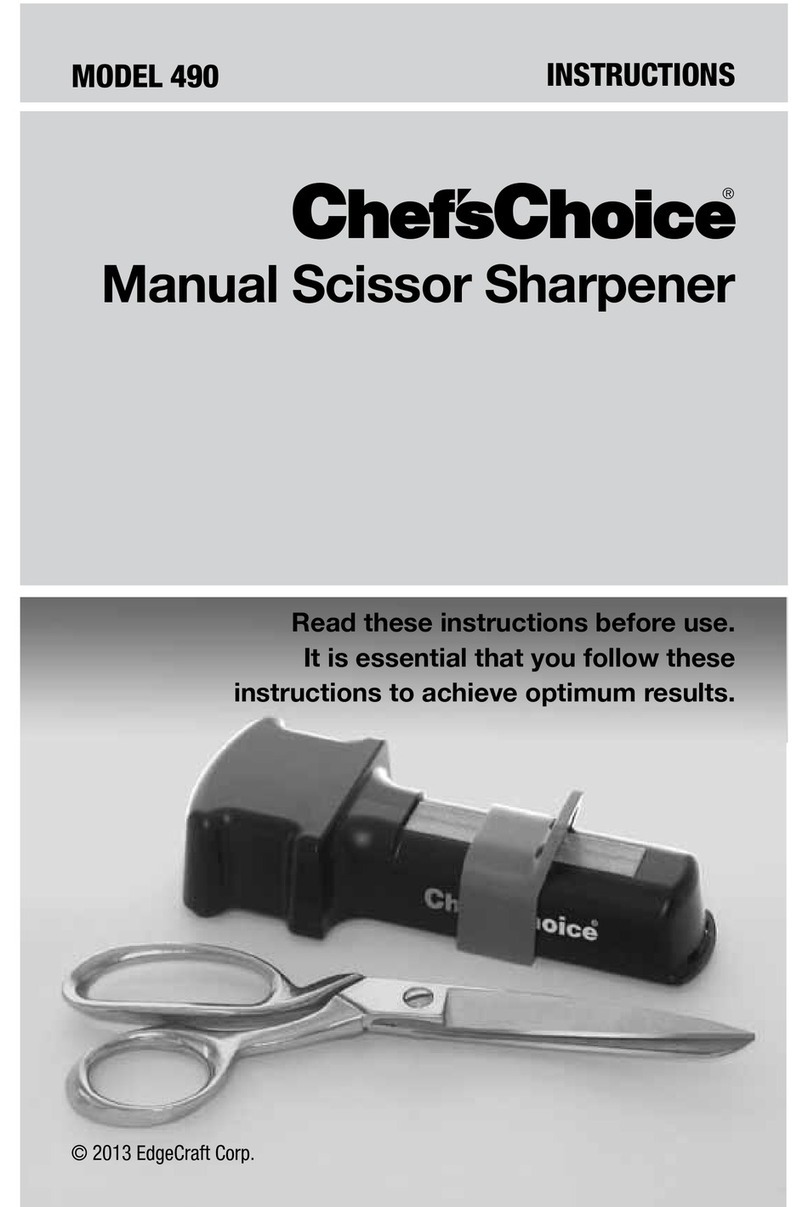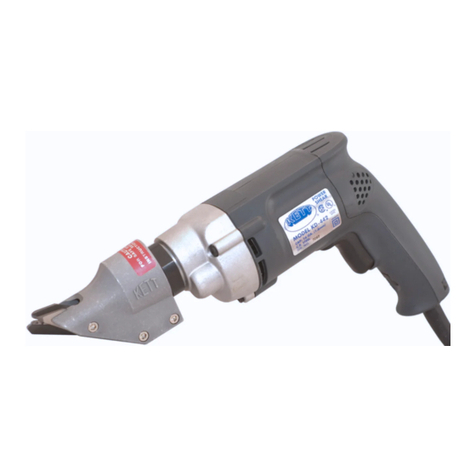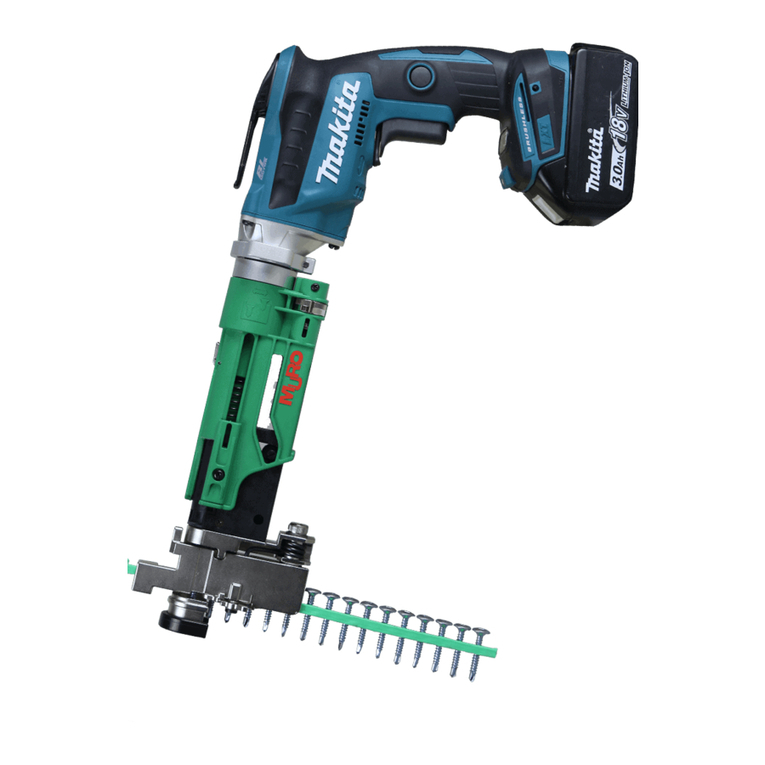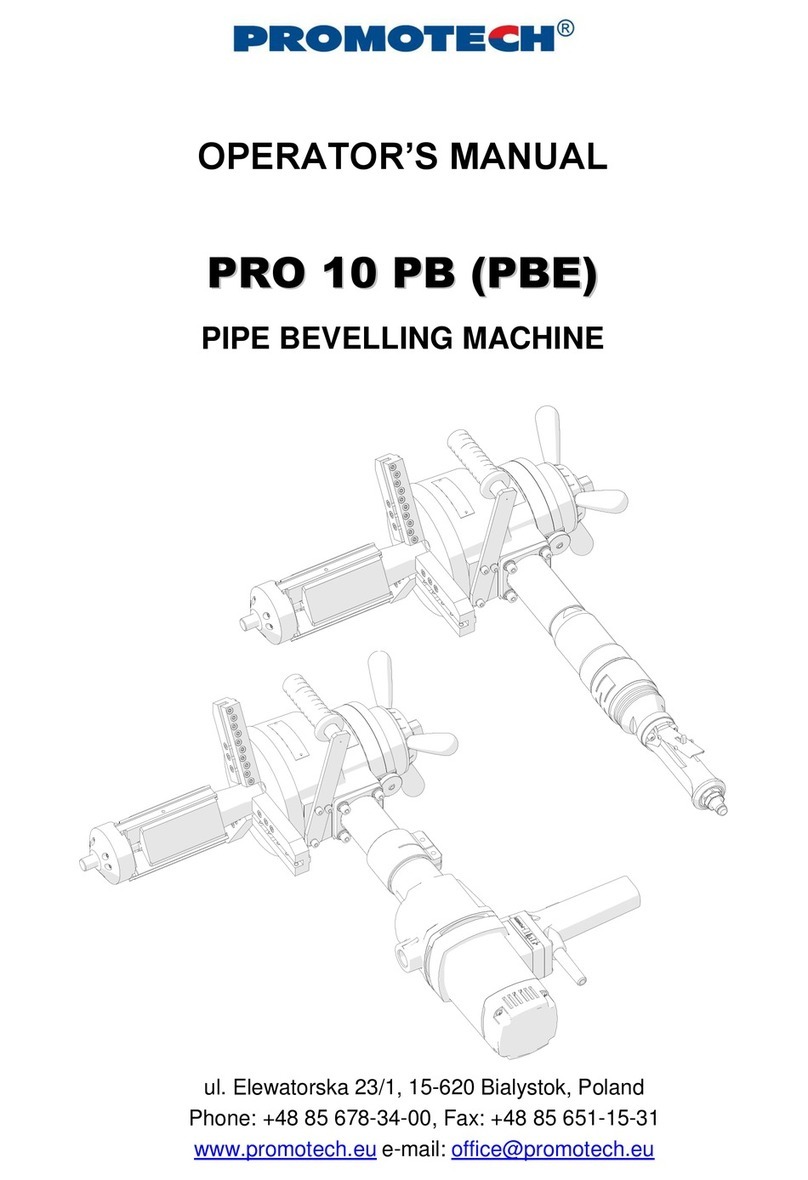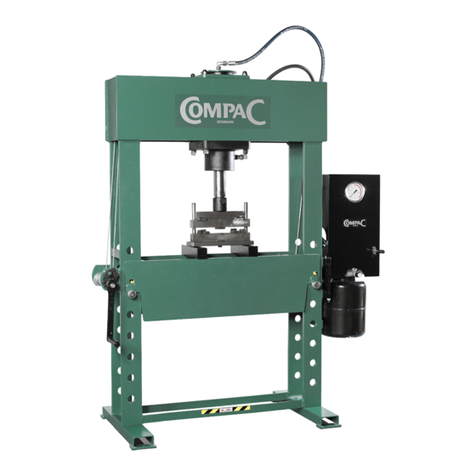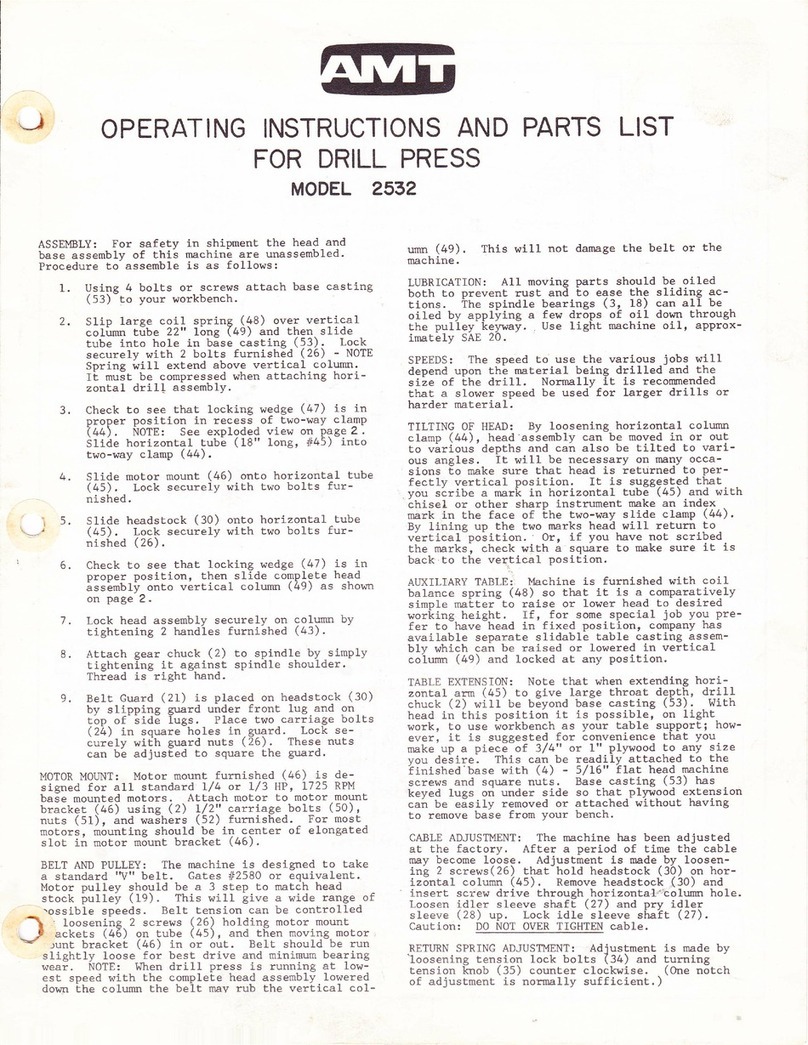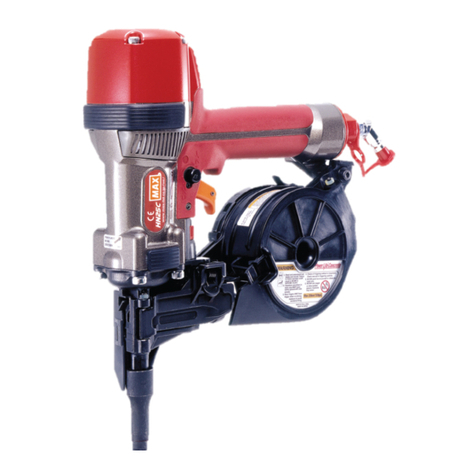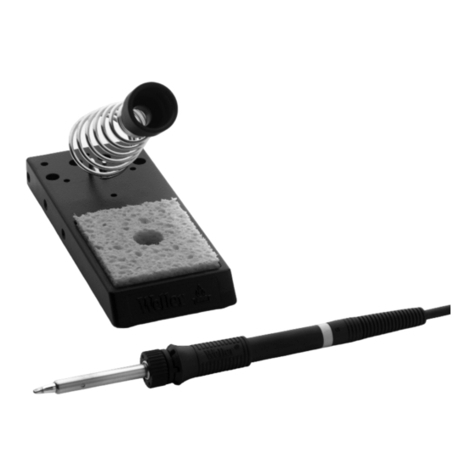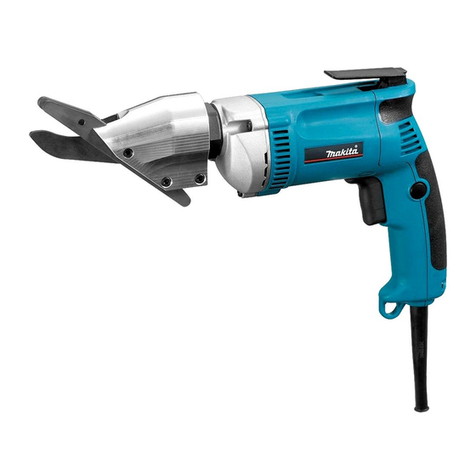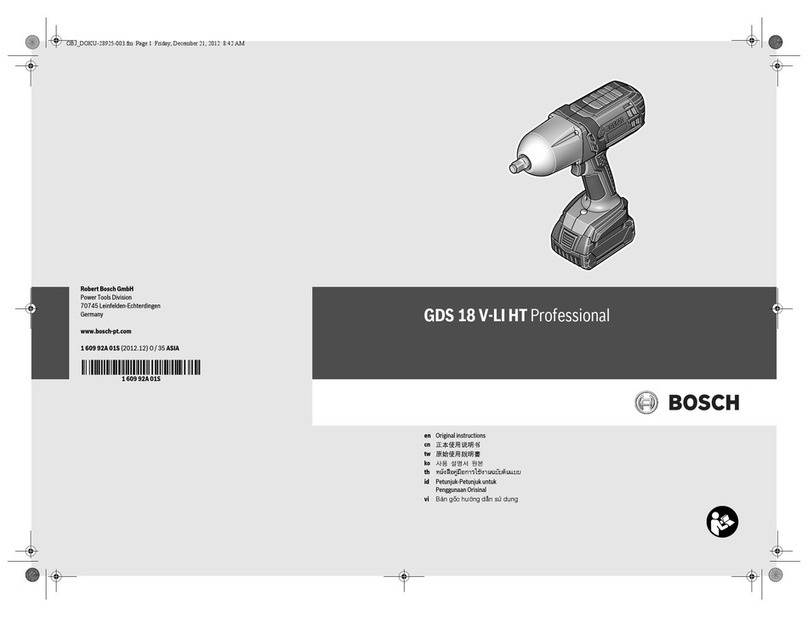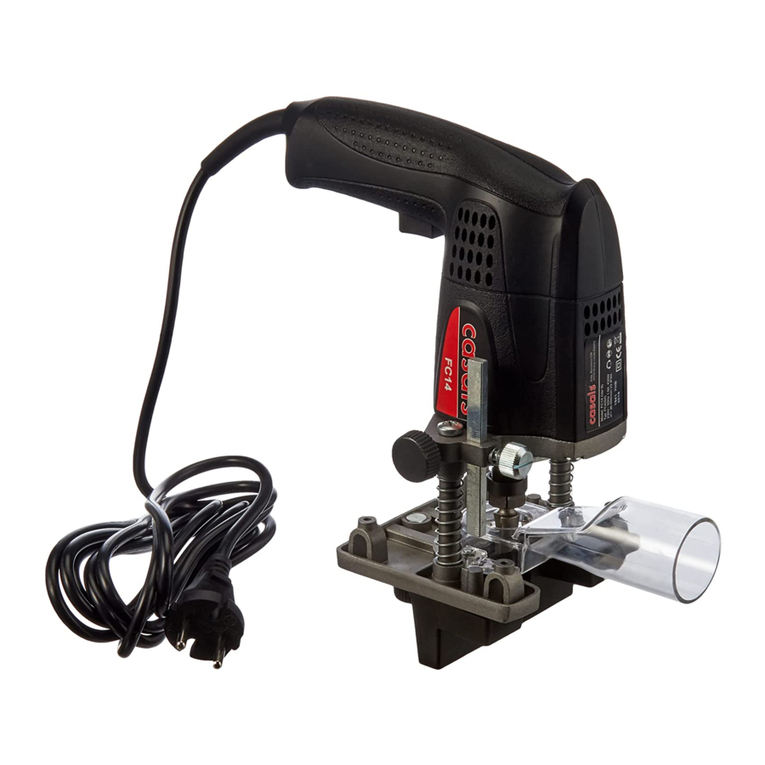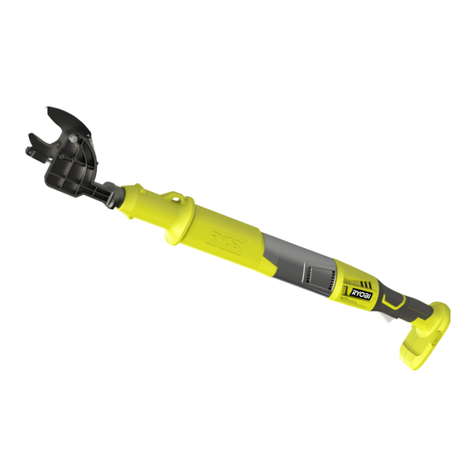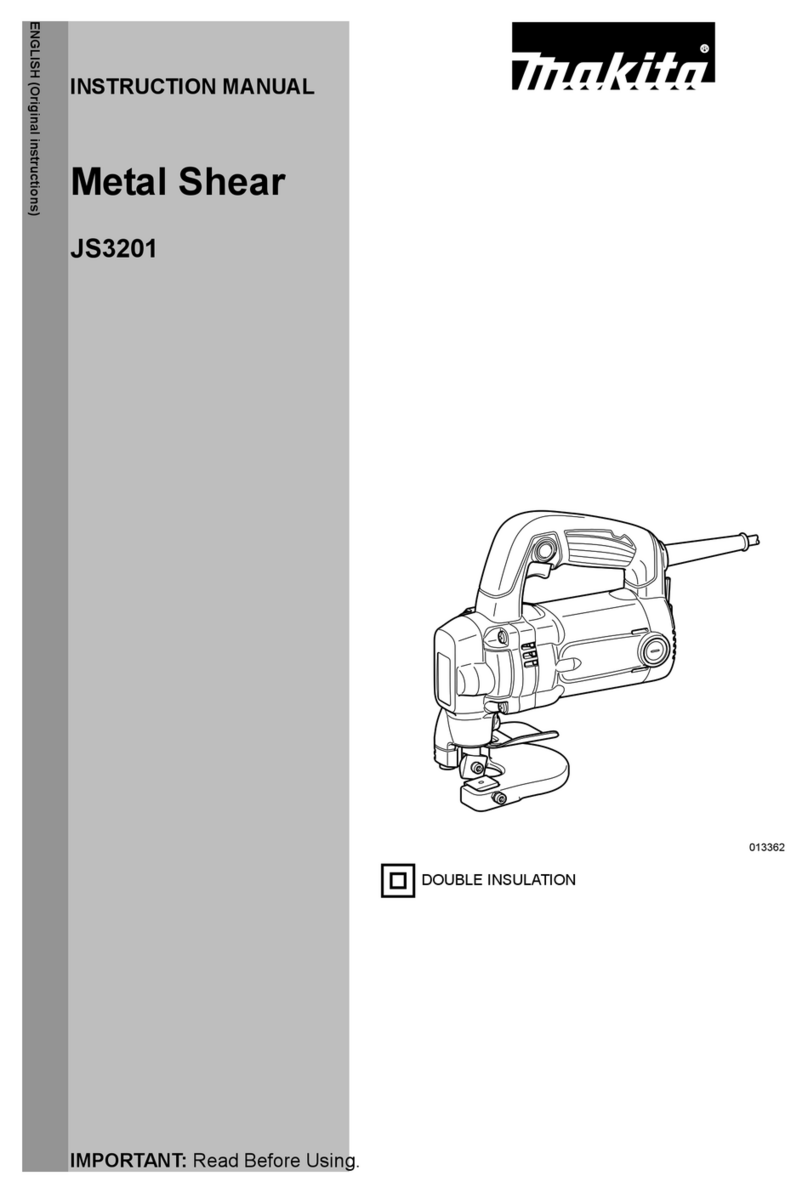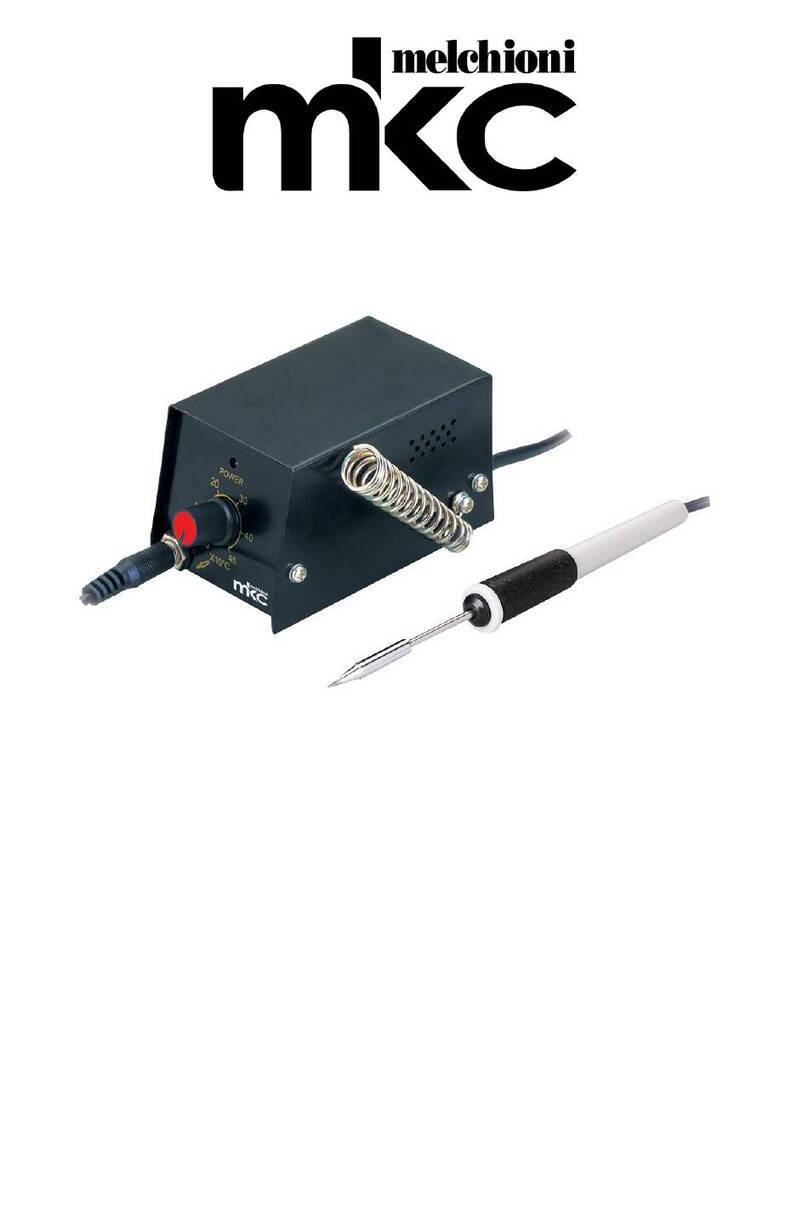Edge Craft Chef'sChoice 480KS User manual

MODEL 480KS INSTRUCTIONS
Manual Diamond Hone®
Knife & Scissors Sharpener
Read these instructions before use.
It is essential that you follow these
instructions to achieve optimum results.

INSTRUCTIONS
Congratulations! You have selected the world’s first professional compact knife
and scissors sharpener, invented and made in the U.S.A. by EdgeCraft: the
world’s leading manufacturer of sharpeners. The EdgeCraft 480KS includes an
assortment of accessories to meet a wide range of sharpening needs. To get the
most from your new compact sharpener please follow these instructions.
The Model 480KS, See Figure 1, consists of the 2-Stage Knife Sharpener, two (2)
diamond coated abrasive pads, and three (3) Scissors Angle Guides.
The sharpener is shown at upper left – Figure 1 with the Fine grit diamond pad in
place on top of the sharpener. That abrasive pad, held in place by a magnetic strip
(not shown) recessed under the pad, can be removed and stored in the compart-
ment under the sharpener.
The sharpener shown in the upper right is turned over to show the open storage
compartment on its underside with the compartment cover removed.
There are two (2) different diamond coated pads, Coarse and Fine. The Fine grit
pad has a ruled groove along its length on the diamond coated side in order that
it can be readily identified. The Coarse grit pad is ungrooved. The abrasive pads
held in place on top of the sharpener by the built-in magnet can be removed from
the magnet with a finger nail or by inverting the sharpener and tapping it lightly
on the table.
There are three (3) differently colored Scissors Sharpener Angle Guides.
Follow the Detailed Instructions carefully to insure perfect results.
Figure 1: Model 480KS Knife and Scissors Sharpener and its components.

Figure 4: Sharpening in Stage 2.Figure 3: Sharpening in Stage 1.
KNIFE SHARPENING
The Chef’sChoice®480 KS Knife and Scissors Sharpener is equipped with a
2-stage knife sharpening section with built-in angle guides that take the guess-
work out of sharpening and 100% diamond abrasives that sharpen quickly and
efficiently! Knives are sharpened first with medium diamond abrasives in Stage 1
then with fine diamond abrasives in Stage 2. The sharpening angle in both stages
is precisely controlled by roller angle guides (Fig. 2).
First, familiarize yourself with the parts of the sharpener (Fig. 2). Always start
with a clean knife. Place the sharpener on a flat surface, near the edge of a
table or other secure work surface. Hold the sharpener with fingers safely behind
the Guard Rib and place the blade in Stage 1: the slot nearest to the Guard Rib
(Fig. 3). Make sure the blade leans firmly against the roller guides. Without any
downward pressure, move the blade back and forth in the Stage 1 slot until the
blade is sharp. Keep your eyes on the roller guides; one or both should turn as you
pull the knife back and forth to ensure the knife is at the correct angle. Both sides
of the edge will be sharpened at the same time.
Next, place the knife in the Stage 2 slot, (Figure 4) making sure the blade leans
firmly against the roller guides and repeat the back and forth movement to refine
and further sharpen the edge. Usually, only 25 back-and-forth strokes are needed
in Stage 1 and about 5 back-and forth strokes in Stage 2. It is important to keep
the blade in contact with the knife roller guides at all times and apply little to
no downward pressure on the blade. If the knife is not sharp enough, repeat the
steps described above for both Stages
1 and 2.
SUGGESTIONS: If you’re right-handed,
hold the handle in the left hand and the
knife in the right. If left-handed, reverse
hands. Just remember to start sharpen-
ing in the slot nearest the handle (Stage
1). You won’t need any sharpening oils,
lubricants, water or other liquids. Stage Figure 2: Knife sharpener parts.
Magnetic Holder
Guard Rib Roller Angle
Guides
Stage 2
(Fine)
Stage 1
(Medium)
Knife
Sharpening

1 and Stage 2 are designed for only sharpening knives, not for sharpening scissors
or other tools.
CAUTION! Always keep fingers behind the guard rib. Handle the
sharpened knives with care - - they can be extremely sharp!
HOW TO USE SPECIALTY DIAMOND SHARPENING PADS
The Chef’sChoice®Diamond Hone®480KS come with auxiliary diamond sharpen-
ing or honing pads that provide additional sharpening capabilities. It also features
a magnetic holder on the handle (See Figure 2) so sharpening pads can be easily
interchanged. Their use is described below.
DIAMOND ABRASIVE SHARPENING PADS
The Chef’sChoice®480KS with the coarse diamond abrasive pad (mounted on
top of the handle) can be used as a sharpening stone to presharpen extremely
dull knives, before sharpening them in the two-stage sharpening section. Put the
sharpener on a secure work surface. Hold by the two-stage sharpening section
(not the handle!) with fingers safely behind the guard rib.
Position the knife blade at about a 20° angle to the pad (See Figure 6). Pull the
blade in a smooth motion away from the edge. Use only light pressure. Alternate
sides, sharpening one side of the edge
then the other. Continue until the edge
is reasonably sharp. Then use the two-
stage sharpening section to produce
a razor-sharp edge. Diamonds can-
sharpen any material, including stain-
less steel alloys and tool steel. The
coarse diamond abrasive pad mounted
on the model 480KS can also be used
like a file to sharpen hatchets and other
cutting tools (Fig. 7).
Figure 7: Sharpening an axe with the
coarse pad.
Figure 6: Pre-sharpening a knife with
coarse pad: correct angle and motion.
Figure 5: Auxiliary coarse pad (on
handle) and fine diamond pad.

FINE DIAMOND PAD/FISHHOOK SHARPENER
This pad has a long groove in the center to sharpen fishhooks. Push the point
of the hook along the bottom of the groove moving away from the point (Fig. 8).
This fine grit pad can also presharpen knives before sharpening in the two-stage
sharpening section.
STORAGE COMPARTMENT
The Chef’sChoice®480KS feature a handle storage compartment to hold
sharpening pads, personal accessories, fishhooks, line cutters and even small
pocket knives!
SCISSORS SHARPENING
The Chef’sChoice®Model 480KS is designed to also sharpen scissors to
professional standards, simply and easily. It can put an exceptionally sharp edge
on your kitchen, household, sewing, and arts and crafts scissors. There are several
distinctly different types of scissors, consequently, it is important to completely
read these instructions to optimize your sharpening results.
The Chef’sChoice®Model 480KS Manual Knife and Scissor Sharpener owes much
of its uniqueness to its precision Scissors Angle Guides, designed to position
the scissor blade securely at a precise angle against the diamond abrasive pad.
Before sharpening your first scissors it is important to read the following
instructions carefully.
IMPORTANT INFORMATION
1. WARNING: EVEN THOUGH ALL SCISSORS MAY APPEAR TO BE SIMILAR,
THERE ARE MAJOR DIFFERENCES AMONG THEM THAT MUST BE UNDER-
STOOD BEFORE YOU USE THIS SHARPENER. THE MODEL 480KS WILL
SHARPEN MOST, BUT NOT ALL, TYPES OF SCISSORS. DO NOT ATTEMPT
TO SHARPEN HAIR STYLING SCISSORS, PINKING SHEARS, MANICURE
SCISSORS, SERRATED BLADES, TIN SNIPS, OR SCISSORS MORE THAN 10”
IN LENGTH.
Figure 8: Using the fishhook sharpening
pad: correct motion.
Figure 9: Storage Compartment.

The Chef’sChoice®Model 480KS will sharpen most other scissor blades,
including knife-edge scissors, as described below. It is essential, however that
you follow the instructions to optimize your results.
2. It is not entirely obvious that the two blades on some scissors can be different.
When you cut with scissors, one blade the anvil blade, is designed to be below
the material and the other blade called, the cutter blade, is above the material.
See Figures 10 and 11. Commonly the blade on top of the material, the cutter
blade, does most of the cutting. Referring to the Figures 10 and 11, note that
the cutter blade usually has the oblong finger-hold and a more rounded tip. The
anvil blade has a more pointed tip and a round finger hold.
3. It is very important to be able to identify the special knife-edge type scissors.
They have a cutter blade that is factory sharpened at a very small angle to form
a knife-like edge that is extremely sharp. THE KNIFE-EDGE CUTTER BLADE
MUST BE SHARPENED ONLY WITH THE WHITE COLORED KNIFE-EDGE ANGLE
GUIDE SUPPLIED WITH EACH SHARPENER. With this type scissor, the knife-
edge cutter blade does virtually all the cutting. Commonly only the cutter blade
of this type scissor has the knife edge. When that is the case and you can
properly identify and sharpen that blade, sharpening the other (anvil) blade is
optional. Only the knife-edge scissor blade should be sharpened by the special
procedure on page 10. If you elect to sharpen the anvil blade, use the sharpen-
ing procedure for standard scissors described on page 8. Do not confuse these
blades. If you have any doubt about whether you have this type of scissors, ask
your nearest fabric or sewing center to help you identify these special blades
before you sharpen them. (Most lower cost and general purpose scissors are
not knife edge scissors).
4. During the sharpening process you will need to know how to feel for a burr on
the scissor blade in order to know when sharpening is complete. Feeling for
a burr involves running your finger carefully across (NOT ALONG) the back of
the blade as shown in Figure 12. A burr is a microscopic bending of the tip of
the edge produced during the sharpening process which can be felt but is not
Figure 10: Typical Right-handed Scissors.
Figure 11: Typical position of the Cutter
Blade and Anvil Blade on
Right-handed Scissors.

always visible. It will feel rough and jagged compared to the smooth finish on
the back of the blade.
5. The Model 480KS will sharpen either right hand or left hand scissors with-
out the need to disassemble them. If you are left handed you probably have
purchased left handed scissors*. To sharpen right hand scissors, hold the
wider, knife sharpener portion of the sharpener in your left hand. With left hand
scissors hold the sharpener in your right hand (See Figures 13 and 14). How-
ever, the orientation of the angle guide on the sharpener will remain the same
with either right or left handed scissors.
6. Before sharpening identify the type of scissor you have*. Unless you have
scissors designed for specialized applications, you will have either; (a) stan-
dard right handed scissors; (b) standard left handed scissors; or (c) knife edge
scissors (which can be either right or left handed). By far the most popular
scissor is standard right handed. Follow the appropriate instructions below
depending on the type of scissors you have.
* You can determine whether your scissors are right or left handed as follows: Open the
scissors and lay them on a table. If the cutting edge of the top blade faces to your right, the
scissors are right handed. If the cutting edge of the top blade faces to your left, the scissors
are left handed.
SHARPENING PROCEDURES - GENERAL
Regardless of the type of scissors, either of the two blades can be sharpened first.
Position the sharpener adjacent to the edge of a tabletop as shown in Figures
13 and 14. Put the appropriate grit diamond pad on the sharpener and slide on
the correct Angle Guide as described in the following sections. You will want to
securely hold the handle of the scissor blade being sharpened in your free hand
(right hand if you are sharpening right handed scissors) and press the inside
mating flat face of that scissor blade securely against the guiding surface of the
angle-guide as shown. Before you start sharpening, the flat face of the blade
should be in perfect contact with the
guide surface and the cutting edge of
that blade must be in good sliding con-
tact with the diamond coated abrasive
pad. The free blade should hang freely
below the table as illustrated.
With the correct Angle Guide (see
subsequent sections) set onto the
sharpener and the flat face of the scis-
sor blade positioned in good contact
with the guide surface move the blade
back and forth smoothly with its edge
in sliding contact with the abrasive pad
Figure 12: Carefully feel for a burr along
the entire back of the blade. Note arrow
for direction of finger movement when
in contact with blade.

while maintaining perfect contact between the guiding surface and the face of the
blade being sharpened. This cutting or sawing-like motion becomes natural with
just a little practice. Apply only light downward pressure, sufficient to maintain
solid contact between the edge being sharpened and the diamond sharpening pad.
Continue the back and forth sawing-like motion until a burr is created along the
entire length of the scissor edge as outlined below.
A. SHARPENING STANDARD, RIGHT-HANDED SCISSORS
NOTE: NOT FOR KNIFE-EDGE SCISSOR BLADES.
To sharpen Standard Right Handed Scissors, proceed as follows:
1. Hold the knife sharpener end as a handle with your left hand (Figure 13) with
sharpening surface facing up.
2. Make certain the Fine grit diamond pad is placed in the recess on top of
magnetic holder, abrasive side up. (Identify the Fine grit pad by the groove ruled
down the length of that pad).
3. Slide the Red Angle Guide onto the smaller end of sharpener and position it as
shown (in Figure 13) over the diamond pad. The flat angle guiding surface of
the Red Guide must lean to your right – away from the sharpener handle. The
Angle Guide can be positioned anywhere over the diamond pad as long as the
blade edge rests on the diamond pad.
4. Place the sharpener adjacent to the edge of the table as shown.
5. Hold one scissor blade by its handle firmly in your right hand as shown in
Figure 13 and align the inside mating flat face of the blade against and in
intimate contact with the guiding surface as shown. The other blade should
hang vertically below the table surface as illustrated (Figure 13). With the blade
so positioned the cutting edge of the blade will be in contact with the surface
of the diamond coated pad. (The other blade should be on the left side of the
blade being sharpened).
Figure 13: Suggested hold for right
hand scissors.
Scissors Angle
Guide
Abrasive
Figure 14: Suggested hold for left
hand scissors.
Scissors Angle
Guide
Abrasive

NOTE: Sharpening left-handed scissors using the procedur designed for right-
handed scissors, or vice versa, will severely damage the scissor edge!
6. Holding the inside flat face of the blade constantly in intimate contact with the
guiding surface while maintaining the edge in solid contact with the diamond
abrasive pad, move the scissor blade forward and backward in a cutting or
sawing-like motion 4 or 5 times. Stop and check to determine if a burr has
formed on the flat face along the entire length of the edge (Figure 12). You may
find it convenient to hold the blade guide with your left thumb and/or forefinger
as shown in Figure 13.
7. If a burr is detected along the entire edge, proceed to Step 8. If no burr has
developed continue to sharpen the edge with the back and forth motion until a
burr is present and then proceed to Step 8.
8. When a burr has been created along the entire length of the first blade, remove
the scissor and open and close the blades fully five (5) or more times to cut off
the burr.
9. Then repeat Steps 5 thru 8 with the second scissor blade.
10. Finish by opening and closing the scissors 5 to 10 times rapidly to cut off any
residual burrs along both blades. Wipe the blades off carefully with a soft cloth.
11. Test the blades for sharpness using a thin sheet of paper. If you need to further
improve sharpness, repeat the Steps 5 thru 11. Your scissors should cut
paper very easily when properly sharpened. If your scissors have an adjust-
ment screw make certain it is tightened until blade faces contact well when
opened and closed.
After many resharpenings if the above procedure fails to give a good edge, it may
be necessary to REANGLE THE EDGE as described below:
A.1 REANGLING THE EDGE OF STANDARD RIGHT-HANDED SCISSORS
This should be necessary only infrequently, when the procedure of Section A
does not sharpen well. When this is needed, proceed as follows for RIGHT-
HANDED scissors:
1. Hold the knife sharpener end as a handle (Figure 13) with your left hand with
the sharpening surface upward.
2. Insert the Coarse grit diamond pad in the recess directly on top of the magnetic
holder, abrasive side up. (First remove the Fine grit pad, which can be stored in
underside compartment).
3. Slide on the Gray Angle Guide over the Coarse diamond pad. The flat angle
guiding surface of the Gray Guide must be to your right leaning away from the
knife sharpener end.
4. Follow Step 4 thru 10 of Section A above. Because more metal must be
removed from the edge facet during the reangling, many strokes will be
needed to create the burr.

5. Once a burr is developed along the entire edge, remove the Gray Angle Guide
and the Coarse grit pad. Install the Fine grit diamond pad on the sharpener
along with the Red Angle Guide and repeat Steps 2 thru 11 of Section A.
B. DETAILED PROCEDURE FOR SHARPENING STANDARD
LEFT-HANDED SCISSORS
The procedure for LEFT-HANDED Scissors is the same as for standard right handed
scissors, (see Section A) except:
Step 1. Hold the knife sharpener end as a handle with your right hand
(Figure 14).
Step 2. No change to Step 2 – Section A.
Step 3. The guiding surface of the Red Guide will lean to your left – still away
from the knife sharpener end.
Step 5. Hold the scissor blade firmly in your left hand and in good contact with
the guiding surface.
Steps 6 thru 11. Follow these steps of Section A.
B.1 REANGLING THE EDGE OF STANDARD LEFT-HANDED SCISSORS
Follow procedure of Section A-1 with the following exceptions:
Step 1. Hold the knife sharpener end as a handle with your right hand, and
scissors in your left hand.
Step 2. Follow Step 2 of Section A-1.
Step 3. The flat angle guiding surface of the Gray Angle Guide must lean to
your left – away from the sharpener handle.
Steps 4 thru 10: Follow steps 4 thru 10 of Section A. Hold blade handle in your
left hand. Then reinstall the Fine abrasive diamond pad and the Red
Angle Guide on the sharpener and repeat Steps of Section B above to
complete sharpening.
FOR KNIFE EDGE SCISSORS
IMPORTANT: Knife-edge scissors, designed particularly for cutting heavy or
multiple fabric layers, have one or both blades capable of cutting more like a knife.
NOTE: If you plan to sharpen your scissors and are uncertain whether the scissor blade
is a knife edge type, it is safe to assume it is knife edge and to proceed as described
below. If the blade is not knife edge type you will find that you cannot develop a burr in a
reasonble time. In that event you probably have a pair of standard scissors. Then sharpen
according to the instructions for standard scissors on page 8. See note 3 on page 6 for
further information.
To sharpen KNIFE EDGE SCISSORS:
1. Use ONLY the Fine grit diamond pad (with ruled groove) and the White Angle
Guide. Never use either of the other angle guides or the coarse diamond pads
for Knife Edge scissors. Take time to identify each blade carefully.

2. Otherwise follow Step 4 and the subsequent steps of Section A or Section
B depending on whether you have Right Handed or Left Handed knife-edge
scissors. Most knife-edge scissors are Right Handed.
3. Only the knife-edge scissor blade is sharpened by this special procedure.
Commonly only the cutter blade of this type scissor has the knife edge.
Sharpening the other blade (anvil blade) if it is a conventional blade is
optional.If you elect to sharpen the anvil blade,use the sharpening procedure for
standard blades of Section A or B described above depending upon whether
you have a right or left handed anvil blade.
4. Do not attempt to Reangle Knife Edge Scissors.
SCISSORS SHARPENING SUGGESTIONS
Your Chef’sChoice®Model 480KS is designed to produce scissor edges that are
like new, quickly and easily. To insure that you get the very best scissor edges
every time, take time to correctly identify the type of scissors to be sharpened, and:
1. Always make certain that the flat face of the scissor blade is in intimate contact
and alignment with the guiding surface of the correct Angle Guide (Figure 13
and 14).
2. Sharpen using a smooth back and forth stroke keeping the scissor blade edge
in solid sliding contact with the correct diamond pad during the entire stroke.
3. Do not attempt to sharpen pinking shears, serrated blades or knives, with the
scissor sharpener.
4. Make certain that the scissor blades are clean before sharpening.
5. It is essential to learn how to feel for the burr. This is the best indication that
sharpening in a given stage is complete. Make certain the burr has formed
along the entire blade… from pivot to tip (Figure 12).
6. With curved poultry shears you need sharpen only the smooth convex blade.
The other blade, concave (usually serrated) blade will not need sharpening and
cannot be sharpened on this sharpener.
7. Do not attempt to sharpen serrated blades. However, where only one blade is
serrated, the other blade if it is a standard convex or straight edge blade can be
sharpened using the procedure for standard scissors. Look carefully for serra-
tions. They can sometimes be very small and difficult to see.
8. Scissor Adjustment: All “professional” scissors and many other quality scissors
have a screw tensioner at the pivot. The performance of your scissors and your
scissor life may be improved by adjusting this pivot to establish and main-
tain a smooth edge contact when you close the scissors. Proper adjustment is
determined by opening scissors to 50% of blade length, then tightening until
blade looseness is just barely removed. It is important that the pivot not be
over tightened.

Engineered and assembled in the U.S.A. www.chefschoice.com
Chef’sChoice®, EdgeCraft®and Diamond Hone®are registered trademarks of EdgeCraft Corporation, Avondale, PA.
© 2012 EdgeCraft Corporation M480700
®
EdgeCraft Corporation
825 Southwood Road, Avondale, PA 19311 U.S.A.
Customer Service (800) 342-3255 or 610-268-0500
9. Do not use honing oils, water or any other lubricant on the Sharpener or
sharpening pads.
10. To clean sharpener, shake off or blow off any loose metal filings. Wipe parts
with a damp cloth and store diamond pads in the storage compartment.
LIMITED WARRANTY
Used with normal care, the Chef’sChoice®Model 480KS Knife and Scissors
Sharpener is guaranteed against defective material and workmanship for a period
of one (1) year from the date of original purchase (“Warranty Period”). We will
repair or replace, at our option, any product or part that is defective in material or
workmanship without charge if the product is returned to us postage prepaid, with
dated proof of purchase, within the Warranty Period. This warranty does not apply
to commercial use or any product abuse.
ALL IMPLIED WARRANTIES, INCLUDING IMPLIED WARRANTIES OF MERCHANT-
ABILITY AND FITNESS FOR A PARTICULAR PURPOSE, ARE LIMITED TO THE
WARRANTY PERIOD. EDGECRAFT CORPORATION SHALL NOT BE LIABLE FOR ANY
INCIDENTAL OR CONSEQUENTIAL DAMAGES. Some States do not allow limitations
on how long an implied warranty lasts and some states do not allow the exclusion
or limitation of incidental or consequential damages, so the above limitations or
exclusions may not apply to you. This Limited Warranty gives you specific legal
rights and you may also have other rights which vary from state to state. Send
inquiries and product requiring service directly to our Service Center. Describe
defect and include your address and telephone number.
SERVICE
In the event post-warranty service is needed, return your sharpener to the EdgeCraft
factory where the cost of repair can be estimated before the repair is undertaken.
Please include your return address, daytime telephone number, and a brief
description of the problem or damage to the sharpener on a separate sheet inside
the box. Retain a shipping receipt as protection against loss in shipment.
Send your sharpener (insured and postage pre-paid) to:
Table of contents
Other Edge Craft Power Tools manuals
